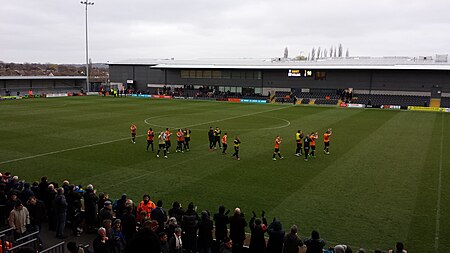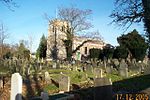The Hive Stadium
Barnet F.C.English Football League venuesFA Women's Super League venuesFootball venues in LondonLondon Broncos ... and 4 more
Rugby league stadiums in EnglandRugby league stadiums in LondonSports venues completed in 2013Use British English from August 2015

The Hive Stadium is a stadium in Canons Park, north-west London, on the former site of the Prince Edward Playing Fields in the London Borough of Harrow. The stadium is home to National League football club Barnet, London Bees of the FA Women's Championship and Tottenham Hotspur F.C. Women of the FA WSL. The stadium's official total capacity is 6,500 and its current record attendance is 6,215, set on 28 January 2019 for Barnet's 3–3 draw with Brentford.
Excerpt from the Wikipedia article The Hive Stadium (License: CC BY-SA 3.0, Authors, Images).The Hive Stadium
Aldridge Avenue, London
Geographical coordinates (GPS) Address External links Nearby Places Show on map
Geographical coordinates (GPS)
| Latitude | Longitude |
|---|---|
| N 51.602599 ° | E -0.291785 ° |
Address
The Hive Stadium
Aldridge Avenue
HA7 1DD London (London Borough of Harrow)
England, United Kingdom
Open on Google Maps





